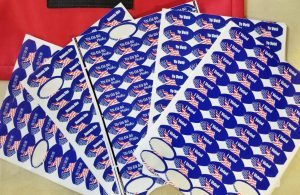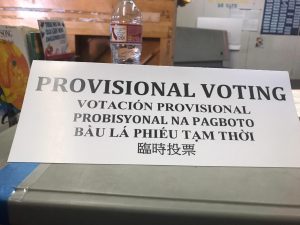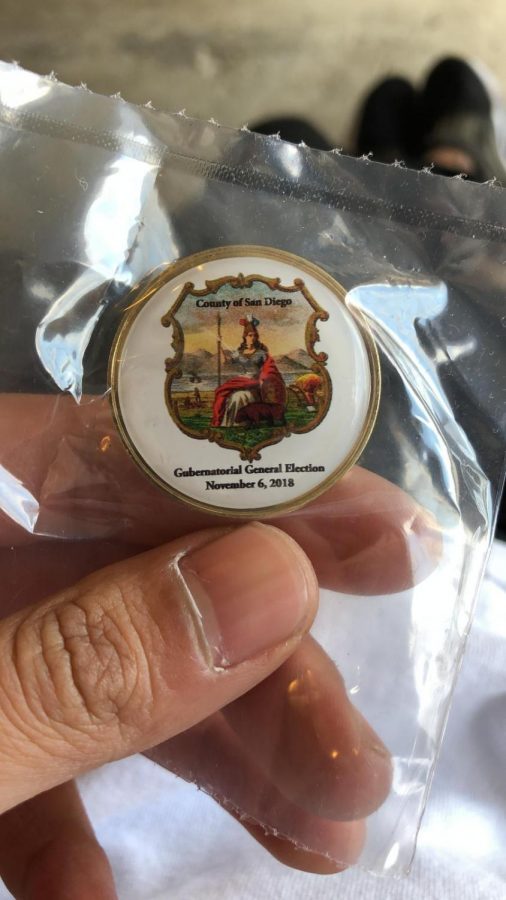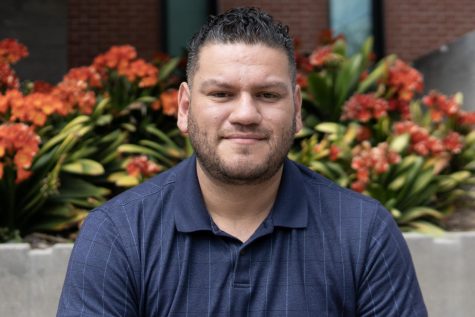FIRST PERSON: My experience as a poll worker
City Times reporter Ian Tapang, a nine-year poll worker veteran, had the opportunity to work as a precinct inspector during the midterm election.
City Times staff writer Ian Tapang holds the pin given to workers to commemorate their service. Photo by Ian Tapang, City Times.
November 16, 2018
When I first became a poll worker in 2009, I was unaware that this process meant way more than voting for candidate A or candidate B.
I was in a high school and signed on to be a clerk for my precinct, or polling place. As naive as I was, I quickly learned the terms and political vocabulary that made me appreciate this democratic process that makes this country great.

Sheets of “I Voted” stickers will be given to voters as they leave their polling place on Election Day. Photo by Carla Zuniga, City Times.
I was a clerk, then became a touchscreen inspector, and now I’m a precinct inspector.
To quickly defined these roles: a clerk is usually someone in high school who helps set up the polling place. They put up the yellow signs, assemble voting booths, and post the voter policies and flag on the wall.
The touchscreen inspector sets up the voting machine (that no one uses) and helps the clerk collect ballots after voters cast their ballots.
The assistant inspector and precinct inspector help each other assist voters who need to vote provisionally, which means a voter who votes outside their precinct. Some aspects of the roles change every election, but for the most part, these are the positions poll workers do.
“Being a poll worker has shown me a different perspective, the other side of the voting or democratic process,” said Peter Garibay, my assistant inspector. “I feel everyone should try it at least once.”

Voters can vote provisionally at any area polling place outside their home precinct. Photo by Jonny Rico, City Times.
The last time I worked the election was in 2016. I remember working at a resident’s home and when I called the homeowner to verify the place, the owner remembered my name and role, this made me realized the sense of community and camaraderie that citizens bring on Election Day.
After telling me he knew me, I was glad to be working alongside him again.
While I couldn’t ask voters certain questions as a City Times staff writer, they were able to tell me that the residence has been their polling place for eight years and they are glad that they continue to hold it as their polling place. I could see neighbors talk not only about the election, but about their lives and their neighborhood.
I feel like this democratic process should not be taken for granted. It is known that this current generation has the highest voter capability but lowest turnout. Though I do not have the stats for this current election, it was very busy, to say the least.
Despite the fact it had a two-card ballot that consisted of state propositions, local measures, and candidates for senate, city council and of course, governor, people still showed up in large numbers.
From the voter’s point of view, the elections seem distant and similar, but to the poll worker, each election is different, and the rules are always changing.
From the poll worker’s perspective, the upcoming election, which will be Nov. 3, 2020, is going to be an easy one. We as citizens will vote for the president and vice president.
Compared to this last election, the workload should be easier and I believe it could be a perfect and exciting time to volunteer.
While I am not trying to bring up any politics, saying that this next election is going to be important is an understatement.











